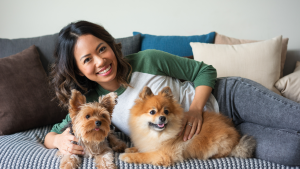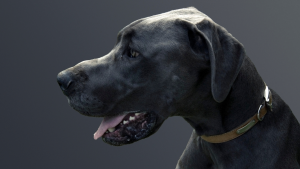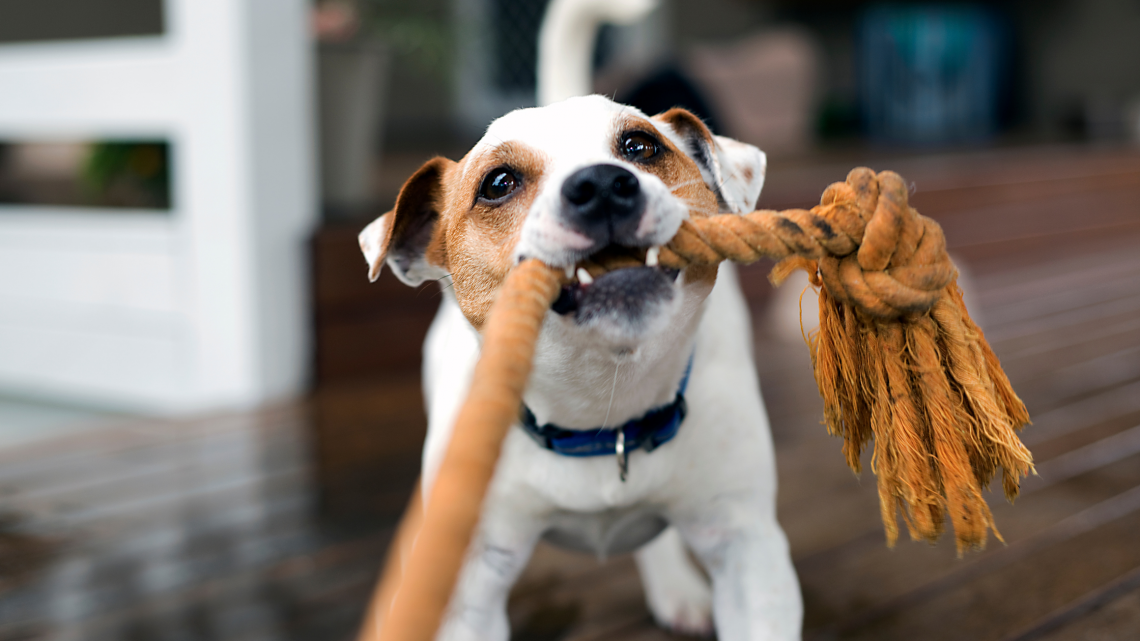If you’re living in an apartment and are interested in keeping a dog. There are a few things that you need to consider. The most important aspect is, will the dog breed you choose be suitable? To properly answer this, you can look at a few different variables and decide if they actually fit in with your situation. In this article, we’ll uncover some dog breeds that you can consider when thinking of housing a dog in an apartment.
Apartment life and dogs
The term apartment is reasonably vague and can cover a few different styles of homes, but the most common is your close proximity to others. As such you should choose a dog that is clean and does not make much noise (preferably zero barks!).
Apartments are often smaller than regular homes, but as dogs will mostly get enough exercise outside of the home, this is not a great factor. We know several apartment owners who keep Great Danes with excellent success! Some apartments may have a shared garden space, but if your pooch is consistently using that as their toilet (even if you pick it all up) you may find yourself on the bad side of a general tenants meeting!
Living in an apartment with a dog means that you’ll need to be fully committed to providing exercise and clean-up duties. Luckily most dogs are happy with regular walks and poop schedules! If you’re not home for a part of the day, it is a great suggestion to get an indoor toilet for your pooch. These can be ‘puppy’ pads. They are like a nappy that goes on the floor, or a specially designed ‘pet loo’. This can solve any issues with a dog that ‘needs to go’ and stops them from barking or scratching at the door.

Think about how much time you have to exercise your dog. Don’t try to overestimate, as finding a pet that fits in with how much exercise you do is more important than having a certain breed. Don’t forget that you’re going to have this companion for 10-15 years! Most dogs will need a walk at least once per day, and the distance they like can vary wildly based on the breed. Not only is walking excellent exercise but can stop unwanted antics by tiring them out. This can mean they’ll sleep while you’re not at home, and at night. This is perfect for not annoying your neighbours.
Depending on how close you live with your neighbours, it may be a great idea to discuss your idea of getting a dog with them. Many people will not usually have a problem, other than ‘barking issues’; but if you’re unfortunate to live next to a person that is adamant about there not being dogs around, they may cause trouble. Some apartment complexes have rules for keeping dogs. Even if your neighbours are not that happy provided you keep to the rules everything will work out.

How to find the best dog for small homes?
After you’ve thought about your exercise routine, toileting issues, and the neighbours, it’s time to think about what dog breed may be best to introduce into your life. If you want a specific dog breed then going directly to a dog breeder is your best option. A good breeder will consider where you live and decide if that is a good environment for their puppies. Provided you have done your homework on a specific breed, you’ll usually have an easy time getting the breed you want.
When you go through a breeder for your dog, you can expect wait times of up to 12 months. This is mostly because good breeders will only have 1 or 2 litters a year, and they may have a list of waiting pet parents. With the sizes of litters being reasonably unpredictable you may need remain on a waiting list for a while. Often breeders will set a price that covers them for vet bills and breeding costs, and are not ‘in it for the money’ but rather want to breed specific traits into, or out of, their dogs.
What are the best dog breeds for apartment living?
As we’ve mentioned the best dog for your apartment is one that fits in with your lifestyle. This is because going with a dog that does not interrupt your current life, but rather enhances it, is your best chance for getting a puppy that’ll fit right in and not be a hassle.
However, for apartments, you’ll most likely want a dog that is on the small side, has a tendency not to bark, and does not need a lot of space. After you’re settled on a few different breeds, we’d recommend talking with some people who own that breed. They can give you some insider information on what the breed is actually like. This will give you just that little bit more information and can tip the scales in favour of one breed over the other.
In no particular order, here we’ll list a few apartment dog breeds that you can consider living with.
- Bichon Frise: An outstanding small sized pooch, and wants to be everyone’s best friend. Has a distinct ‘teddy bear’ appearance. They can be groomed into interesting styles!
- French Bulldog: Has an easy to care for coat and are very energetic. They prefer to be around people and other dogs and are not that happy being left alone. Not the best breed for being around small children.
- Cavalier King Charles Spaniel (Cavies): These were specifically bred to be an ‘indoors’ dog, but will still require exercise to maintain a healthy lifestyle. Needs to be socialised when young to keep their friendly attitude.
- Chinese Crested (Hairless): These dogs don’t bark, and will shed minimally. They will need extra care to look after their skin, but they’re perfect for allergy sufferers.
- Italian Greyhound: These have a very short coat and being an active dog, they need plenty of exercise at a walking pace. Can be timid, but with socialisation when they’re young it should not be a problem. Not really suitable for young families.
- Pug: For a high energy dog, you can’t go past the Pug. However, with their shortened snout they are prone to infections and colds. The fur is very short and they shed quite a bit, but with consistent grooming it can be minimized.
- Poodle: As puppies the Poodle does not need a lot of exercise, but that changes as an adult. They’re highly intelligent and can be readily trained to perform tricks. Require regular grooming, and shed very little (if at all). Try to avoid ‘designer’ poodle breeds.
- Yorkshire Terrier (Yorkie): A reasonably chilled out breed, yorkies tend to have personalities to match their owners. Can be quite energetic, but their small size makes quick walks suitable.
- Chihuahua: A fairly fragile breed, they are best walked on a harness instead of a collar. Available in short hair and long hair, but both require regular brushing. Can be difficult to toilet train, and can be snappy to strangers.
- Greyhound: Even though these are used for racing, they are considered a low energy dog. Some short sprints are all they need, then they’ll spend the rest of the day lazing about. Very intelligent, they’re happy as a lone dog, or being with others.
- Great Dane: Despite their size, this breed is suitable for small living. Talk to any owner, and they’ll agree they are like massive lap dogs. Will need more exercise than smaller dogs and they are more talkers, than barkers.
- Dachshund: Available in a few different coat conditions (wire, long haired, and short haired), not suitable for a home with lots of stairs. Will bark at strangers and they’re not suitable with most children.
This list is suited more as a teaser for information. Before deciding on any breed it’s important to do complete research into the breed you’re leaning towards. Only by knowing the attributes of any dog breed will you find the best suitable companion. Most dogs will benefit from correct training, and will need to attend a puppy school, and then regular obedience training.
In addition to breeders, you can also choose to select a dog from a rescue organisation and shelters. There are many rescues that specialise in particular breeds. Most shelters still have mixed breeds available, but many of those will carry the traits of their parent dogs. You may need to do some extra work when a rescue animal, but the love returned is often the same. As a bonus with a rescue animal you can often skip the toilet training! Either way, you can easily live in an apartment with a dog.


No Comment